
Program: Eora Nation 72 Indigenous tourism sector thriving in NSW
Aunty Margret Campbell is the inaugural Chair of new peak body NATOC = NSW Aboriginal Tourism Operators Council. She's come a long way from working alongside the late great Charles Perkins.
Image Details
( CC BY-SA 4.0 )
2 items In this episode
Julie mccrossin's marriage will be legal come friday night.
Eora Nation 72 Indigenous tourism sector thriving in NSW
Eora nation 71 ancestral repatriation 101.
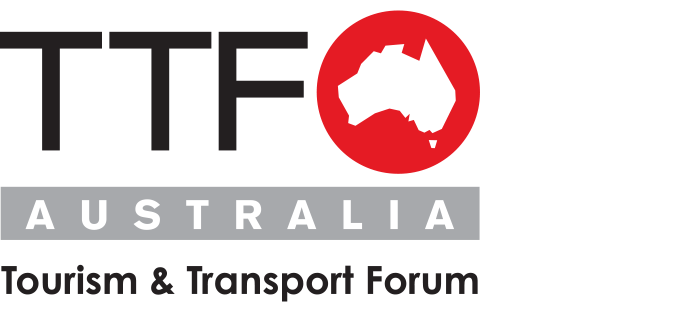
Key Organisations in New South Wales
New south wales is home to the largest first nations population in australia, including more than 340,000 people as of 2021..
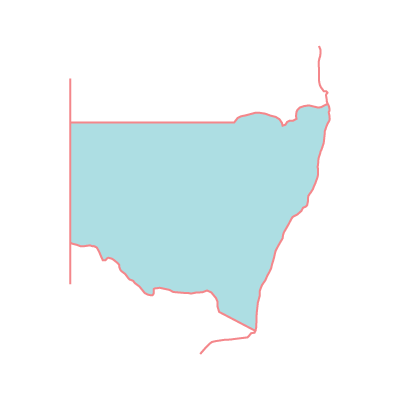
More than 514,000 visitors took part in Indigenous tourism experiences in NSW in 2019, including more than 330,000 international tourists.
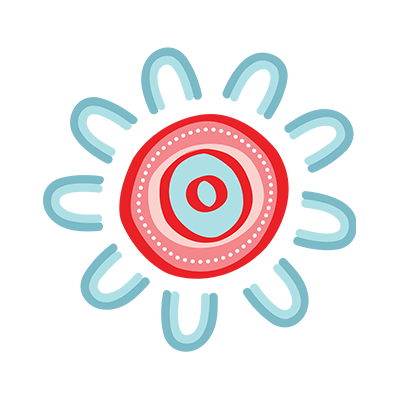
The most popular Indigenous tourism activities for international visitors to NSW were seeing an Aboriginal art, craft or cultural display, attending an Aboriginal performance or visiting an Aboriginal site or community.
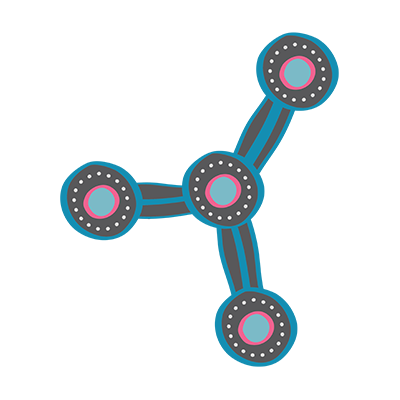
Destination NSW
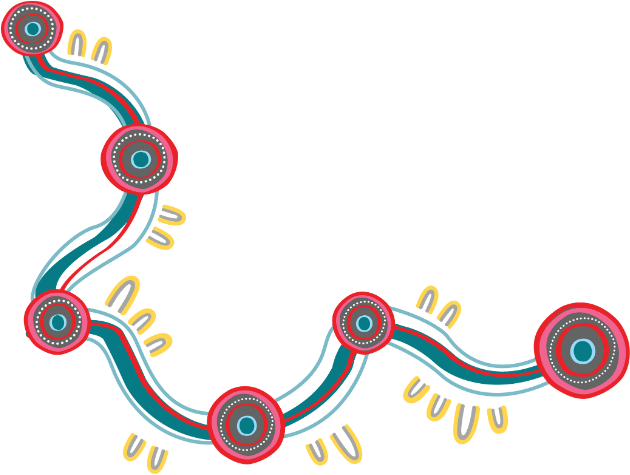
Indigenous tourism policy in New South Wales has been developed by Destination NSW, the state’s lead government agency for tourism and major events, which is part of the Department of Enterprise, Investment and Trade. The initial ‘Aboriginal Tourism Action Plan’ was released in 2013 with a three-year horizon, before it was reviewed with an updated document created for 2017-2020.
Indigenous tourism initiatives continue to be developed by the Department and the NSW Aboriginal Tourism Operators Council (NATOC), an industry body which was developed as a key outcome of the 2013 plan.
The Aboriginal Tourism Action Plan 2017-2020 built on research which reported increased visitor demand and interest in Indigenous Culture, acknowledging the advantages possessed by NSW to deliver these offerings, as well as the importance of ensuring the sector is sustainable and represents First Nations Culture authentically. The plan was built around a series of targets over a three-year timeframe, intended to be completed in collaboration with industry and other groups.
The development of the Aboriginal Tourism Toolkit, which featured over 50 Aboriginal tourism offerings, was an achievement of the 2013-2016 plan. It is a relevant resource for increasing awareness in the tourism industry of Authentic NSW Aboriginal cultural products and experiences.
The NSW Government released a NSW Visitor Economy Strategy 2030, with an updated version in 2020, which aims for NSW to be the premier visitor economy of the Asia Pacific and reach $65 billion in total visitor expenditure by the end of the decade.
The strategy identifies showcasing Aboriginal Culture as a critical strength to help achieve this goal. It commits to supporting Indigenous tourism and creating sustainable commercial opportunities for Indigenous cultural businesses. These opportunities will be realised by partnering with the NSW Aboriginal Tourism Operators Council (NATOC) and First Nations tourism stakeholders to develop authentic and compelling visitor experiences. The strategy also commits to delivering annual workshops, mentoring and other business support for First Nations tourism operators across NSW.
Other Organisations in New South Wales
Organisation.
Aboriginal Affairs NSW
Government Department
Strategies and Indigenous Tourism projects
- Part of the Community Engagement Group of the NSW Department of Premier and Cabinet. Charged with implementing OCHRE, a community-focused plan for Aboriginal Affairs in NSW, for the NSW government. It refers to Opportunity, Choice, Healing, Responsibility, and Empowerment initiatives.
NSW Aboriginal Tourism Operators Council
- NATOC was formed to give a voice to Aboriginal tourism operators to better engage industry while providing mentoring to Aboriginal business leaders in tourism.
- It’s been critical to forming partnerships and networks between First Nations and other tourism businesses and industry groups, as well as providing business support.
Land Councils
Representative Body
- NSW’s 120 local Aboriginal land councils are governed by a state-wide elected body known as the New South Wales Aboriginal Land Council.
Acknowledgement of Country In the spirit of reconciliation, the Tourism & Transport Forum (TTF) acknowledges the Traditional Custodians of Country throughout Australia and their connections to land, sea and community. We pay our respects to Elders past and present.

- NSWALC Enterprises
- Yilabara Solutions
- Yarpa Business & Employment Hub
- Birribee Housing
- Economic Development Policy
- Home Ownership Statement
- All Resources
NSWALC is seeking investment to implement the project “New England North West (NENW) Development of Integrated set of Aboriginal Tourism Initiatives”.
The initiative so far has developed four business cases as well as the case for a regional marketing platform that will offer a logical and integrated approach to developing Aboriginal tourism in NSWALC’s Northern and North Western Regions.
The three expected outcomes from the proposal are:
- More immersive Aboriginal tourism experiences
- Improved marketing of individual products and the region’s Aboriginal tourism offer
- More profitable Aboriginal tourism
NENW Aboriginal Tourism Resources
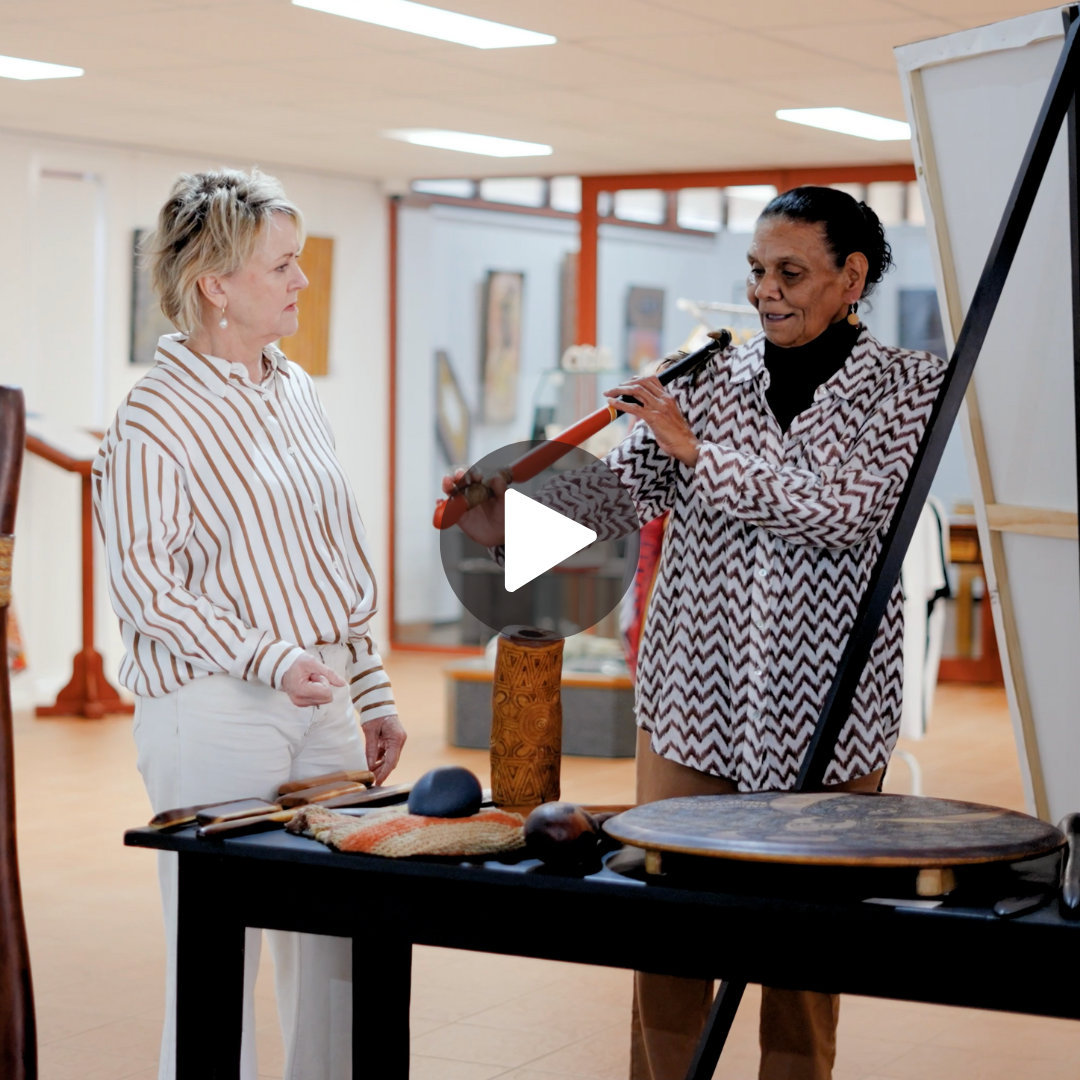
Mostly Sunny

ABORIGINAL TOURISM EXPERIENCE DEVELOPMENT WORKSHOP PROGRAM
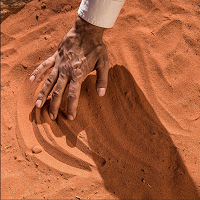
Destination NSW is holding a series of Aboriginal Tourism Experience Development Workshops in partnership with the NSW Aboriginal Tourism Operators Council (NATOC).
The goal of the experience development workshops is for aspiring Aboriginal tourism operators to gain a greater understanding of the tourism sector and access to services to further develop their businesses.
As an introduction to Aboriginal tourism in NSW, Destination NSW and NATOC are hosting a virtual two-hour workshop on 6 April and this will be followed by seven in-person workshops from June to October. The two-day workshops will be delivered in partnership with NATOC and will include on-country experiences, a welcome dinner and a workshop program with presentations and case studies from a range of stakeholders.
For dates and to register your spot click here
Please note:
- There is no charge to attend the workshop.
- Attendees will be responsible for their own accommodation and travel to and from each workshop.
- Travel Information
- Aboriginal Heritage
- Natural Attractions
- Search Accommodation
- Caravan, Tent & Holiday Parks
- Eat & Drink
- Tourist & Scenic Drives
- What's On Calendar
- School Holiday Activities
- Monthly Overview
- Community Calendar
- Annual Event Planner

Skip to main content
Airbnb Hosts learn about local First Nations Culture and Traditions
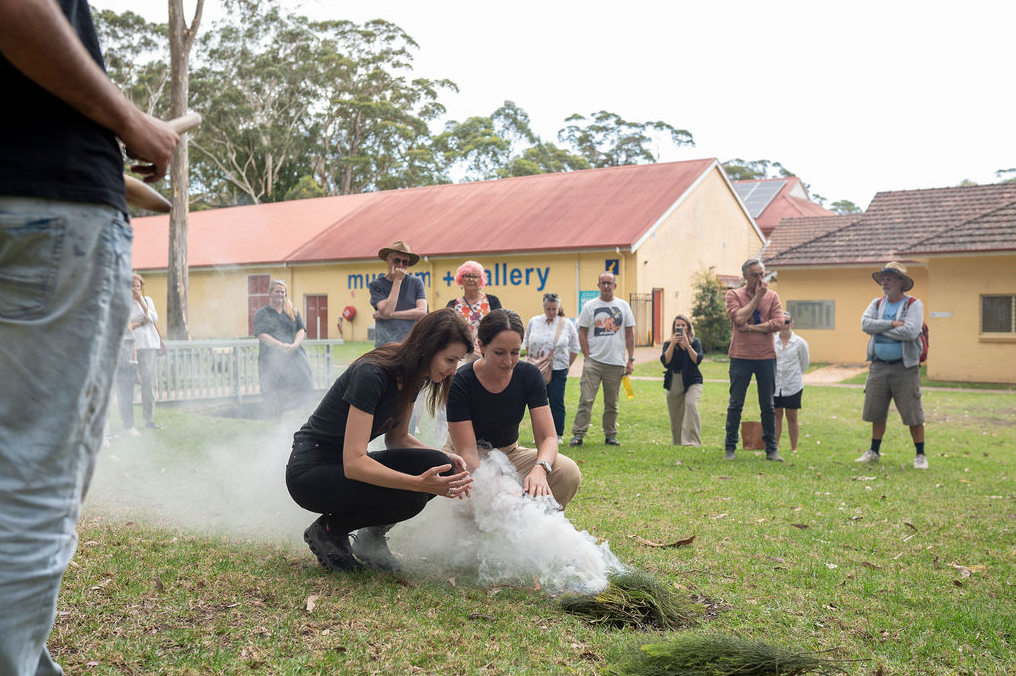
In partnership with NSW Aboriginal Tourism Operators Council (NATOC) the pilot initiative provided Airbnb Hosts the opportunity to participate in an on-country experience and gain an in-depth understanding of the local First Nations culture and businesses which offer products and services that Hosts can promote to guests during their stay.
The program encouraged local Hosts to establish relationships with local First Nations communities, to continue their learning on how they can be respectful and inclusive of First Nations customs and beliefs.
Susan Wheeldon, Airbnb Country Manager, Australia and New Zealand, said the pilot was a fantastic way to bring Airbnb’s Reconciliation Action Plan (RAP) efforts to life in a meaningful way.
“By educating our Hosts on local First Nations culture, we can create a more enriched and respectful experience for all.
“Through the session with NATOC, our South Coast Hosts were provided with a really engaging and informative session and we are hopeful that following this pilot, we will be able to roll out the initiative to other Host communities across Australia.”
Dwayne Bannon Harrison, NATOC Chairperson said, “NATOC is honoured to partner with Airbnb on such a rewarding project. Facilitating cross cultural exchange between local hosts and our First Nation businesses and communities leads to stronger relationships and potential business partnerships. We look forward to rolling out further programs in the near future.”
Bronwyn Reid was one of the Hosts who attended the event and commented, “The whole experience was delightful: Dwayne enlightened us in many ways and gave us a new depth of appreciation for our local indigenous community; the leaders who gave us the smoking ceremony and took us on the bush walk also gave us a much appreciated education in bushlore and even an awakening to what can be ‘told’ with the playing of the didgeridoo. Loved it all, thanks to everyone involved in putting it together!”
Reconciliation at Airbnb
Airbnb’s journey started with our Reflect RAP in 2021, which laid the foundations for developing long-term mutually beneficial relationships and partnerships. This work has deepened our organisation’s understanding of the need for reconciliation and an education on First Nation’s history and culture within Airbnb’s community.
To learn more about Airbnb’s Reconciliation journey, please visit airbnb.com/reconciliation

WHO ARE WE?
YOUR INDUSTRY PEAK BODY AND PROFESSIONAL ASSOCIATION
Outdoors NSW & ACT is the peak body for Outdoor Recreation, Outdoor Education, Adventure Tourism & Nature Therapy in the state of NSW and the Australian Capital Territory. We support our members in building sustainable careers, organisations and industry operations that get our communities more connected to nature for their health and wellbeing.

Outdoors NSW & ACT is richer for understanding the importance of our country’s beginnings and the traditional ownership, care and custodianship by Aboriginal people.
We pay our respects to Elders past and present and to all Aboriginal people. We hope that we may continue the discussions and action to educate our future generations on this important culture for Australia and the world.

INDUSTRY EVENTS

Already an Outdoors NSW & ACT member?
Login to the Members Resource Portal now
The Outdoors NSW & ACT Members Resource Portal contains:
Business Plan Templates
Marketing Resources
Research Studies
Articles on case studies in the outdoors
Comprehensive library of recorded forums
Mentoring Program materials
Advocacy Templates
Outdoor Industry Information
Industry Events & Conference Materials
Committee resources and outcomes
Discount offers
Tenders & Grants relevant to the Outdoors
Product Recalls
Industrial Relations information and news
and much more...
Not a member yet?
The Outdoors in an inclusive environment, see
our inclusion statement
Outdoors NSW & ACT is proudly supported by Office of Sport. The Strategic Partnership funds specific projects that support the advancement of the outdoor recreation sector.

Outdoors NSW & ACT is richer for understanding the importance of our country’s beginnings and the traditional ownership, care, and custodianship by Aboriginal people. We pay our respects to Elders past and present and all Aboriginal people. We hope that we may continue the discussions and action to educate our future generations on this important culture for Australia and the world.
Follow ONSWACT :
Phone: 1300 964 246
© 2024 by Outdoors NSW & ACT Limited
ACN 657 112 260
View our Privacy Policy 2022
Get Outdoors
- NSW in the Outdoors
- ACT in the Outdoors
Work Outdoors
Events in the Outdoors
Our Members
INDUSTRY RESOURCES
In the Media
Sub-Committees of Outdoors NSW & ACT
Volunteers in Outdoors NSW & ACT
Inclusion in Outdoors NSW & ACT
Products and Offers
The Outdoors
Adventure Tourism
Nature Therapy
Outdoor Education
Outdoor Recreation
The wider Outdoor Industry
- MyServiceNSW
- Manage account
- Logout of MyServiceNSW
2024 NSW Aboriginal population projections
Projections of the NSW Aboriginal population, by region, from 2021 to 2041.
In 2023-24, Aboriginal Affairs NSW led the development of Aboriginal population projections for New South Wales, in partnership with the NSW Department of Planning, Housing & Infrastructure (DPHI).
The project was informed and guided by internal and external Aboriginal stakeholders including NSW Coalition of Aboriginal Regional Alliances (NCARA) and the NSW Coalition of Aboriginal Peak Organisations (CAPO).
These latest NSW Aboriginal population projections show how Aboriginal population groups across areas in NSW may change between 2021-2041.
The NSW Government has previously never had a consistent set of Aboriginal population projections to use across all agencies for strategic planning, or for communities to use for their own planning and advocacy.
The projections fill this gap, and are based on an improved model of estimating Aboriginal births, migration, and life expectancy across NSW. This is a different method than the one used by the Australian Bureau of Statistics, taking into account increases over time in the number of people who identify as Aboriginal.
For more information, please email [email protected] .
NSW summary documents

WAITOC Aboriginal Tours & Experiences
WAITOC is the peak representative for Aboriginal tours and experiences in Western Australia. We promote and support authentic cultural experiences at a state, national and international level.
About WAITOC Become a Member
Find Aboriginal Tours & Experiences by Category
All experiences, campgrounds & places to stay, bushfood experiences, cultural tours, food & gifts, galleries & art centres, festivals & events, over 200 aboriginal tours & experiences throughout western australia..
Click on the button below to browse our map of all the statewide locations.
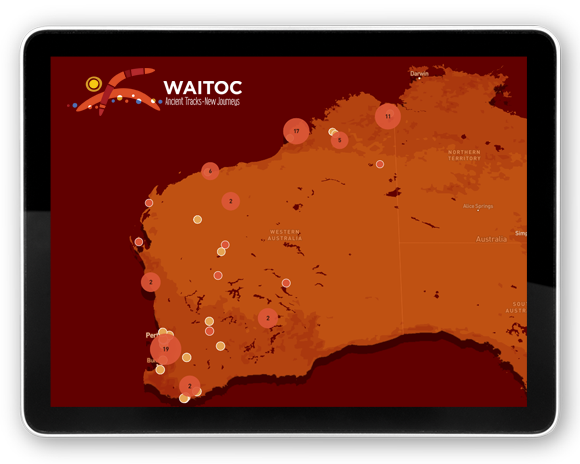
Publications, Promotions & Educational Cultural Tools

Pet Friendly Campgrounds
Pick up a copy of WAITOC’s Aboriginal Campgrounds and Retreats from Visitor Centres and start exploring Western Australia’s spectacular coastal retreats and remote outback locations with your furry friends.
Download The Brochure

WAITOC News & Stories
Knead to know
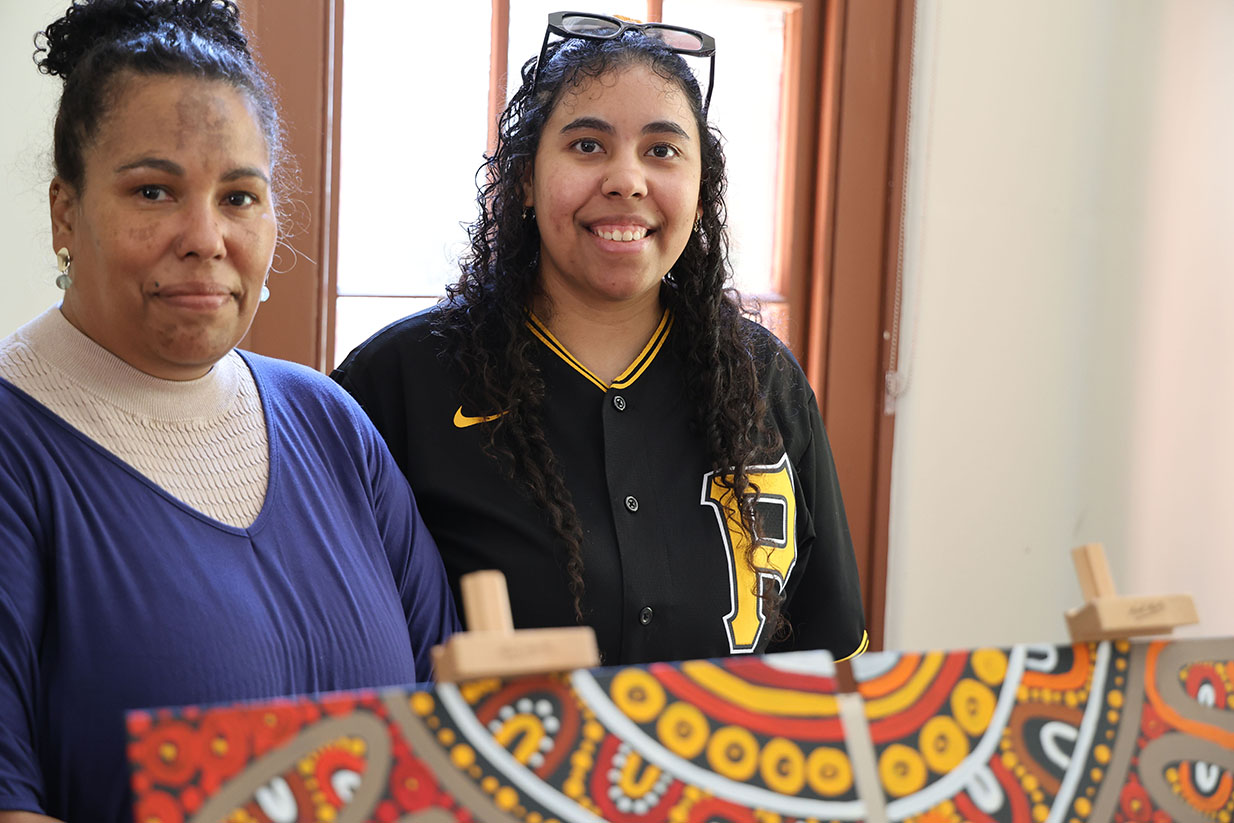
Connect the dots

Mayi Harvests
Featured Experience

ATWA Launches New Web Site
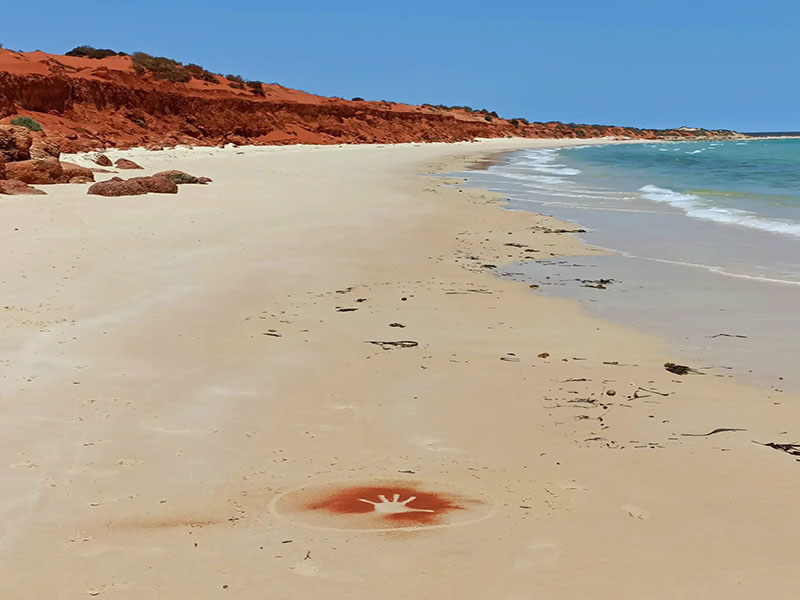
Post-October 14 Referendum: Where to from here?
Subscribe to our newsletter.
Indigenous Australian culture

- 2.1 Australian Capital Territory
- 2.2 Jervis Bay Territory
- 2.3.1 Sydney
- 2.4 Northern Territory
- 2.5 Queensland
- 2.6 South Australia
- 2.7 Tasmania
- 2.8 Victoria
- 2.9 Western Australia
- 8.2 Variation
- 8.3 Disadvantage
<a href=\"https://tools.wmflabs.org/wikivoyage/w/poi2gpx.php?print=gpx&lang=en&name=Indigenous_Australian_culture\" title=\"Download GPX file for this article\" data-parsoid=\"{}\"><img alt=\"Download GPX file for this article\" resource=\"./File:GPX_Document_rev3-20x20.png\" src=\"//upload.wikimedia.org/wikipedia/commons/f/f7/GPX_Document_rev3-20x20.png\" decoding=\"async\" data-file-width=\"20\" data-file-height=\"20\" data-file-type=\"bitmap\" height=\"20\" width=\"20\" class=\"mw-file-element\" data-parsoid='{\"a\":{\"resource\":\"./File:GPX_Document_rev3-20x20.png\",\"height\":\"20\",\"width\":\"20\"},\"sa\":{\"resource\":\"File:GPX Document rev3-20x20.png\"}}'/></a></span>"}'/>
Many travellers to Australia are interested in the culture of Indigenous Australians (Aboriginal and Torres Strait Islander people).
Indigenous Australians practise the oldest continuing human culture in the world.
Before the arrival of the First Fleet in 1788, more than 250 Indigenous language groups existed in Australia, with some of the languages still being spoken today. Unfortunately many have been lost, though they are being revived.
Australia had been home to many indigenous ethnic groups prior to the arrival of the British. Much like their counterparts in the Americas, their numbers have been greatly reduced today, with many having been wiped out by European settlers either through diseases brought to Australia by the settlers, military conquests, genocides or other reasons.
The indigenous Australian people are officially known by the Australian government as Indigenous Australians , and have also been officially divided into two groupings; the Aboriginal people of mainland Australia and Tasmania , and the Torres Strait Islanders from the Torres Strait Islands located between Far North Queensland and Papua New Guinea .
The term "Aborigines" was common from the start of colonisation to the late 20th century, but is now deprecated in favour of the terms above. It is now considered to be a racist slur and should be avoided.
Each state and territory of Australia has important indigenous heritage museums, events, activities, as well as shops with indigenous arts and crafts.
Each state has organisations that coordinate promotion of Aboriginal/Indigenous tourism.
- In New South Wales, it is the NSW Aboriginal Tourism Operators Council
- In Western Australia, it is the Western Australian Indigenous Tourism Operators Council .
Australian Aboriginal people are related to the Melanesians who are a majority in New Guinea , the Solomon Islands , the Torres Strait Islands and Maluku in Indonesia, and a minority in some other regions. The two groups are thought to have arrived as parts of one migration around 50 to 60 thousand years BCE.
The last group of Indigenous Australians living in their traditional lifestyle was the Pintupi Nine in the Gibson Desert in Western Australia in 1984. However, there have been reports of one in the Great Victoria Desert in 1986, which is fairly recent.
- Dancing With Strangers , Inga Clendinnen, 2003. Australian historian Clendinnen presents her reading of a wide range of primary sources from the 18th century describing early interactions between indigenous Australians and invading British colonisers. She illustrates very early days of genuine curiosity and attempts at cultural understanding eventually soured and thwarted.
- The Battle of Parramatta: 21 to 22 March 1797 , Johnathan Lim, 2016. Based on a true story, it shown the perseverance of Pemulwuy in the 1790s, having escaped 3 times, with all being successful and dared to rebel against white European settlers, haunts the story of the early European colonisation of Sydney.
Destinations

There are a large range of places all around Australia that have sites that reflect the full array of the indigenous experience of the last two hundred years. In each state there are museums, galleries and places where the richness of the culture can be found.
There are also sites of ancient rock art and stories that go back thousands of years, there are places where you can see living expressions of indigenous art and culture, and everything between. The time of the British presence in Australia is very short in comparison to the time of the indigenous population’s presence on the continent. It is well worth looking at the places that have records of the presence.
Australian Capital Territory
Jervis bay territory, new south wales.
- -32.975869 151.012371 4 Finchley Aboriginal Area , Big Yengo . A traditionally significant area for the local Aboriginal community. Now offers a stunning lookout as well. ( updated Jul 2021 )
- -33.74889 143.13556 5 Mungo National Park , Mungo . Inside the national park is Lake Mungo, now a dry lake, which contains the archaeological remains of three Mungo people. Dated to over 42,000 years old, they are the oldest human remains in the Australian continent. ( updated May 2021 )
- -29.779 150.714 6 Myall Creek ( 24 km northeast of Bingara ). On 10 June 1838, 28 unarmed Wirrayaraay people were massacred by 11 unprovoked, white men. Although massacres against Aboriginal people were common since the British arrived in 1787, Myall Creek was the first time when it was reported and investigated by the authorities, with 7 of the murderers who received a guilty verdict and were executed. The vast majority of massacres after Myall Creek had still not been reported. A bronze plaque and heritage-listed memorial site now stand on the site of the massacre. ( updated Oct 2018 )

- -31.302395 145.309347 7 Mount Grenfell Historic Site . Ngiyampaa rock art in the Outback region of NSW. ( updated Apr 2021 )
- -29.4331 142.0108 10 Tibooburra . Contains a 'Keeping Place' museum with indigenous tools and artefacts found across the Aboriginal country and home to the Karrengapa people.
- Rock Carvings , can be seen in -34.1225 151.063889 15 Royal National Park - catch the train and ferry to Cronulla and Bundeena. There are extensive carvings in -33.651 151.201 16 Kuringai Chase National Park , near West Head that are accessible only by car. Closer to the city, there are examples at Balls Head and Berry Island, near to Wollstonecraft station. There is an interpretive walk at Berry Island.
Northern Territory
- -24.0167 133.95 18 Ewaninga Conservation Reserve . The reserve is a claypan, a natural storage of water even after light rain, which attracts flora and fauna to the area. Rock art was imprinted into the soft sandstone by the Arrente people, the precise age of which is not known. What makes the art stand out is its recurrent circular motifs. ( updated Feb 2018 )
- -9.88 142.59 25 Torres Strait Islands . A part of Australia where indigenous people are still the majority. Torres Strait Islanders are ethnically Melanesian and are more closely related to Papuans to their north than to Aboriginal Australians who are native to the rest of the country. Some Torres Strait Islanders were also engaged in agriculture since precolonial times, another way in which they are distinct. ( updated Jun 2017 )
South Australia
- -41.137 148.308 28 Bay of Fires . The area has many impressively large shell and bone middens that grew from the local Palawa people eating seafood over thousands of years here. ( updated Jan 2018 )
- -38.06667 141.91667 30 Budj Bim . The earliest evidence of aquaculture in the world is found here. As early as 6000 BC, the Gunditjmara people created a system of channels, dams and weirs trapping eels and fish. The eels were smoked and preserved and were eaten all year around. ( updated Jan 2018 )
- -37.2 142.39 31 Grampians National Park . The Grampians contains over 80% of all Aboriginal rock art found in Victoria. The rock art is primarily found in five shelters: Bunjul, Manja, Billimina, Ngamadjidj and Gulgurn Manja . ( updated Oct 2018 )
Western Australia
- -20.581 116.808 35 Murujuga National Park ( Burrup Peninsula ). What was an island and is now an artificial peninsula is estimated to have the largest collection of rock art in the world, with up to 1,000,000 individual petroglyphs. ( updated Jan 2018 )
Like other Australians, the vast majority of Indigenous Australians are fluent in English. However, in remote communities, the majority of them speak an Indigenous language as their first language and then English as a second language.
Some older Indigenous people in certain remote communities can also speak German, as some of the missionaries in Australia were from Germany. For example, in the town of Hermannsburg near Alice Springs , the Western Arrarnta language is the local Indigenous language, but since the town was once a Lutheran mission, both English and German are widely understood by adults.
In some communities, a Creole language known as Kriol is widely spoken. It's an English-based creole language with influences from Indigenous languages. Kriol is mostly spoken in the Top End of the Northern Territory (excluding Darwin and Arnhem Land but including in around Katherine ) and in the western portion of the Kimberley region of Western Some older Indigenous Australians in remote communities may speak very little English.
Learning a few words in the local language is always a good idea, as it shows understanding and appreciation of Indigenous culture. Even a simple word such as "hello" can be useful.
Indigenous people often use some of their own words in their languages as slang. These slang terms are often different in each region.
- Bangarra Dance Theatre , Pier 4/5 Hickson Road, Walsh Bay, Sydney , ☏ +61 2 9251 5333 , fax : +61 2 9251 5266 , [email protected] . The Bangarra Dance Theatre combines indigenous history and culture with contemporary dance. They tour Australia-wide.
- 26 January, the anniversary of the invasion of the First Fleet, and commemorated officially as Australia Day, is marked by indigenous Australians as Invasion Day , a day of political action, or Survival Day , marked with concerts and community events celebrating the survival of the indigenous peoples. In more recent times, the term "Invasion Day" is being marked by more and more non-indigenous Australians.
- The National Aboriginal and Islander Day Observance Committee has a week of events in the Australian winter each year.
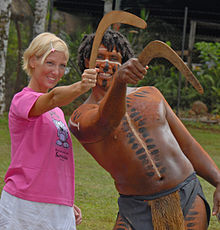
In all of the capital cities and towns with significant Aboriginal populations (such as Cairns or Alice Springs ), there are plenty of workshops and lessons where you can immerse yourself in indigenous culture.
- Boomerang throwing is a popular skill that many tourists want to acquire. If you want to learn throwing a boomerang that comes back to your hand, make sure you have a suitable boomerang for returning. Most boomerangs available in Australia are in fact non-returning. It is best for beginners to not try throwing in windy weather. It will be hard to make progress and build confidence. You can also learn how to throw hunting boomerangs that move in a straight line. Similarly, spear throwing lessons are available across the country.
- Didgeridoo lessons are as common throughout the country. Learning how to play the didgeridoo is not easy and it can take a long time to truly master the instrument. You will need to have strong lungs and learn the art of circular breathing. Despite that, there are many lessons suitable for novices that teach the fundamentals, which are more than useful. Note that it is disrespectful for women to even touch a didgeridoo due to its long and sacred history. However, most places don't allow women to have didgeridoo lessons due to many cultural reasons.
- The practice of fire-stick farming , used by Indigenous groups to change the composition of flora and fauna, control weeds, reduce hazards and increase biodiversity, is taught in interactive cultural tours, particularly in the Top End .
Aboriginal arts and crafts are among the most sought-after souvenirs when overseas tourists visit Australia.
There has been a rise in fake or inauthentic Aboriginal artwork, that is, products that claim to be made by Aboriginal Australians but were not, or where the design of a particular product was not licensed to be reproduced. One way to make sure what you are buying is genuine is to look for the Indigenous Art Code logo. Not only does the logo signify that the product is authentic but that the artists have been fairly paid too.

The food and cuisine of Aboriginal Australians, and for that matter any dish made from native Australian ingredients is known as bush tucker . Unlike the foods eaten by many of the pre-Columbian peoples of the Americas, the European colonisers were not too keen on the foods encountered in Australia and did not attempt to grow most of them on a commercial scale. The one exception is the macadamia nut which spread to Hawaii in the 1880s and is now famous the world over.
Meats include kangaroo, crocodile, emu, goanna and witchetty grubs. The seafood Indigenous Australians particularly on the coast ate was diverse and comprised barramundi fish, catfish, mud crabs, angasi oysters along with many other fish and crustaceans. Plant foods range from the quandong and riberry fruits to the warrigal greens leafy vegetable. Lemon myrtle is a spice that has become popularly used in teas and bakery items. The traditional diets of some Aboriginal ethnic groups may include endangered species, the consumption of which is strictly limited to those specific groups using only traditional hunting methods, and unlikely to be available to you.
The Indigenous Australian bread making tradition is among the oldest in the world. Breads are made by grinding seeds, roots and corms. The precise ingredients and methods used vary by group and location. Certain seeds had to be leached of their toxins before it was made into dough and cooked over an open fire.
In many fine dining restaurants, many chefs are incorporating more indigenous ingredients into their dishes in what is known as "Modern Australian" cuisine.
The best way for a traveller to contribute to the well being and dignity of the people is to support indigenous-run tourism and cultural ventures and to treat individual indigenous people with respect.
Indigenous Australia is a complex group of living, continuing cultures: it is important to understand many Aboriginal sites are not museum pieces arranged for the benefit of curious travellers. When visiting sacred sites or fragile ecosystems of cultural significance, many indigenous communities prefer that visitors arrange their trips through formal community programmes or indigenous organisations.
Some communities, townships and protest sites can also be places where issues are fragile and current and can be problematic with a range of issues occurring. Understanding that some locations might best not be part of a travel itinerary is well worth researching before travelling to them.

There are two flags representing Indigenous Australians; one representing the Aboriginal People, and the other representing the Torres Strait Islanders. Aboriginal athlete Cathy Freeman famously did her lap of honour carrying both the Australian and Aboriginal flags after winning the gold medal in the women's 400m event at the 2000 Sydney Olympics .
Some sites may not look sacred, but they are sacred for many Indigenous Australians – do not take photos of sacred sites. In particular, don't take photos of sites that are depicting rock art of a human.
Until January 2022, the Aboriginal flag was under a strict copyright, and it was unavailable for most uses. However, in January 2022, the federal government bought the flag at a cost of $20 million, making it free for public use.
Indigenous Australians is the official blanket term used to cover all people indigenous to Australia. Aboriginal people is generally used to refer only to those indigenous to mainland Australia and Tasmania, while those indigenous to the Torres Strait Islands are regarded as a separate group called the Torres Strait Islanders , and do not identify as "Aboriginal" as they are more ethnically Melanesian. The term First Nations is increasing in use.
The term "Aborigine" is now considered a racist slur and should not be used. "Aboriginal" is the more acceptable term.
Never use the terms "abo", "noonga" or any other similar term as these words are considered racist and highly offensive.
It is important to understand the diversity of the indigenous communities. There are over 400 Aboriginal nations in Australia, with over two hundred different Aboriginal languages still spoken among them. Aboriginal people in Sydney are not the same nations as those in Dubbo .
In Tasmania, there are descendants of Aboriginal people who are serious about their indigenous roots. It is not correct to say the Tasmanian Aboriginal community no longer exists.
Each state has variation as to how the governments have related to the indigenous population; it is not just the peoples responses. States have differing levels of involvement in indigenous rights and heritage.
Disadvantage
Due to a long history of oppression, indigenous Australians, as a whole, are disadvantaged relative to other Australians in many ways. Although they have been granted full citizenship rights on paper since 1971, many indigenous Australians are impacted by many problems arising from higher poverty rates, including higher rates of imprisonment, unemployment, alcoholism and drug abuse, as well as lower education levels, life expectancy and access to adequate sanitation and healthcare.
When travelling, you may encounter Aboriginal people asking for money or other items. This is called 'Humbug', and should be refused. If humbug is entertained, you only encourage the problem. However, this is becoming less of a problem now.
Rather than giving money to beggars, consider visiting an Aboriginal art centre (there are many around) and support those who are making a living, or if you can't access an art centre, consider giving to an Aboriginal charity, such as Conways Kids [ dead link ] , a charity in Central Australia set up to ensure that cultural Aboriginal Children from remote communities have the same opportunities as youth from the rest of Australia.
- Age of Discovery
- Australasian wildlife
- Cultural attractions
- Indigenous cultures of North America
- Indigenous cultures of South America
- Kanak culture in New Caledonia
- Maori culture
- Military museums and sites in Australia
- Roma culture in Europe
- Sami culture
- Australian Kriol phrasebook
- Minority cultures of Russia
- Minority cultures of China
- Indigenous Taiwanese culture
- Minority cultures of Japan
- Has custom banner
- Has mapframe
- Has map markers
- Do listing with no coordinates
- Articles with dead external links
- Topics in Australia
- Topic articles
- Usable topics
- Usable articles
- Has Geo parameter
- Articles with no Wikidata coords
- Pages using the Kartographer extension
Navigation menu


COMMENTS
NSW Aboriginal Tourism Operators Council. Services. Cultural Connections. Authentic Aboriginal Experiences. Tourism Mentoring. Working together with community and industry. Advocacy. Representing Aboriginal owned and operated tourism businesses. Site powered by Weebly.
The NSW Aboriginal Tourism Operators Council was formed in 2014 and officially an incorporated association in 2017. The main vision of NATOC is to give voice to Aboriginal owned tourism expertise to better inform industry and provide mentoring to Aboriginal tourism entrepreneurs to fulfil their business journeys.
NSW Aboriginal Tourism Operators Council, Sydney, Australia. 1,167 likes · 2 were here. NATOC are the peak Aboriginal group in NSW that deal with and deliver the best outcomes in Aboriginal Tourism...
Dwayne is also a Director of the NSW Aboriginal Tourism Operators Council-NATOC, along with this has extensive and award-winning achievements in the Aboriginal male wellbeing space through the 'Bring Back the Warrior' approach. Ngaran Ngaran Culture Awareness was established in 2011, NNCA is an Aboriginal owned and operated cultural service ...
Aboriginal owned and operated tourism experiences
The NSW Aboriginal Tourism Operators Council today announced a number of appointments to the NATOC Board, including new Chair Dwayne Bannon Harrison and Craig Layer as the new CEO, to help keep NSW...
Aunty Margret Campbell is the inaugural Chair of new peak body NATOC = NSW Aboriginal Tourism Operators Council. She's come a long way from working alongside the late great Charles Perkins.
These opportunities will be realised by partnering with the NSW Aboriginal Tourism Operators Council (NATOC) and First Nations tourism stakeholders to develop authentic and compelling visitor experiences. The strategy also commits to delivering annual workshops, mentoring and other business support for First Nations tourism operators across NSW
Authentic Aboriginal owned and operated experiences across NSW
For more information about the Parks Eco Pass program for commercial tour operators, please refer to the Parks Eco Pass program webpage or the NSW Parks Eco Pass: Operator Handbook. Aboriginal cultural heritage An authentic Aboriginal tourism experience can only be developed and delivered by or in association with Aboriginal people.
The initiative so far has developed four business cases as well as the case for a regional marketing platform that will offer a logical and integrated approach to developing Aboriginal tourism in NSWALC's Northern and North Western Regions. The three expected outcomes from the proposal are: More immersive Aboriginal tourism experiences.
NATOC was built on the back of hard work, determination and passionate volunteers to grow and nurture Aboriginal Tourism in NSW and therefore there are no membership fees for Aboriginal businesses. The are three different categories of NATOC to align with industry needs; •All Star Member - Export Ready Aboriginal Tourism Operators - 51% or ...
Destination NSW is holding a series of Aboriginal Tourism Experience Development Workshops in partnership with the NSW Aboriginal Tourism Operators Council (NATOC). ... As an introduction to Aboriginal tourism in NSW, Destination NSW and NATOC are hosting a virtual two-hour workshop on 6 April and this will be followed by seven in-person ...
He also is the founding director of Ngaran Ngaran Culture Awareness, Co founder of Mirritya Mundya Indigenous Twist along with being an integral member of the NSW Aboriginal Tourism Operators Council.
NSW Aboriginal Tourism Operators Council, Sydney, Australia. 1,174 likes · 1 talking about this · 2 were here. NATOC are the peak Aboriginal group in NSW that deal with and deliver the best outcomes...
George is the honorary President of the State Library Council of NSW and is a Director of the Board of Racing NSW. He is an honorary Director of the Board of Business Events Sydney Ltd, being Destination NSW's representative. He is a trustee of the Sydney Cricket Ground Heritage Trust. He was made a Member of the Order of Australia in 2016.
In partnership with NSW Aboriginal Tourism Operators Council (NATOC) the pilot initiative provided Airbnb Hosts the opportunity to participate in an on-country experience and gain an in-depth understanding of the local First Nations culture and businesses which offer products and services that Hosts can promote to guests during their stay.
YOUR INDUSTRY PEAK BODY AND PROFESSIONAL ASSOCIATION. Outdoors NSW & ACT is the peak body for Outdoor Recreation, Outdoor Education, Adventure Tourism & Nature Therapy in the state of NSW and the Australian Capital Territory. We support our members in building sustainable careers, organisations and industry operations that get our communities ...
Liked by Craig Layer. As the Regional Manager Aboriginal Programs - ABAI for the Hunter, Mid & Far North Coast Regions I assist Aboriginal and Torres Strait Islander people who are interested in starting their own business or who need assistance with an existing business.<br><br> This includes assistance with the development of business plans ...
These latest NSW Aboriginal population projections show how Aboriginal population groups across areas in NSW may change between 2021-2041. The NSW Government has previously never had a consistent set of Aboriginal population projections to use across all agencies for strategic planning, or for communities to use for their own planning and advocacy.
Contact - NSW Aboriginal Tourism Operators Council. Let's Chat. Hours Weekdays / 7:00 - 18:00Saturday / 9:00 - 15:00. Corporate offices NATOC Aboriginal Corporation 9 Huon St Callala Bay NSW 2540. Contact Info Shane Dredge - Project Manager Phone: 0420 902 221 Email: [email protected].
WAITOC Aboriginal Tours & Experiences. WAITOC is the peak representative for Aboriginal tours and experiences in Western Australia. We promote and support authentic cultural experiences at a state, national and international level.
In New South Wales, it is the NSW Aboriginal Tourism Operators Council In Western Australia, it is the Western Australian Indigenous Tourism Operators Council . Australian Aboriginal people are related to the Melanesians who are a majority in New Guinea , the Solomon Islands , the Torres Strait Islands and Maluku in Indonesia, and a minority in ...
Aboriginal Tourism - NSW Aboriginal Tourism Operators Council ... NATOC
The NSW Local Government elections are just around the corner and we've reached out to candidates eager for your vote in the Richmond Valley.